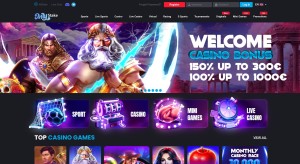One of the earliest cryptocurrencies to be launched worldwide, Ethereum has had the early bird advantage. The decentralized technology powers dApps, NFTs, blockchains, and other Web 3.0 solutions which make it one of the most versatile blockchain networks. With a market cap that’s in the vicinity of around $300 billion, Ethereum is a good option for diversifying a crypto portfolio.
However, some analysts feel that its hold over the market is now being challenged by a new league of altcoins. These tokens are among the best cryptocurrencies to buy in today’s market and have been posting consistent growth.
The list of tokens that have the potential to trump Ethereum includes names like InQubeta (QUBE), Hedera (HBAR), Polkadot (DOT), Algorand (ALGO), Quant (QNT), VeChain (VET), and Celestia (TIA). These tokens have growth-oriented models, making them ideal long-term assets.
If you want to know more about the potential impact of these coins, check out a brief description of their features.
1. InQubeta: Disrupting the AI technology space
InQubeta is a platform where AI startups can find help to counter all possible challenges while scaling. Be it fundraising or brand outreach, there are ample options available on InQubeta to help startups expand.
With a supply capped at 1.5 billion, InQubeta’s native cryptocurrency, the QUBE token is more than a mode of payment for the platform. It has consistently featured on analysts’ best cryptocurrency ICO lists for the year due to its presale growth. Its ICO has so far raked in over $9.9 million.
The ERC-20 token also plays a key role in the investment model. Any crypto user can invest in a startup project through InQubeta’s NFT portal. The NFTs sold at the marketplace are based on startup offers for investors. These offers bear all the details about a project and what’s in it for the buyer.
At the portal, users can compare projects before the final purchase and opt for fractional investment with the QUBE token.
With the funding part taken care of by InQubeta’s platform, startups plan for the next phase of their growth journey with InQubeta’s business development services. If a startup is facing troubles in scaling, they can seek guidance from mentors from the AI industry. The platform can connect startups with AI professionals who have rich experience and valuable insights to share.
Enterprises can avoid financial and legal loopholes by consulting InQubeta’s team of advisors for accounting support.
Another area where InQubeta can help startups is marketing support. With the platform’s help, startups can grow their network and connect with industry professionals to market their AI projects. They can also make the right noise online with InQubeta’s social media channels.
Given how blockchain technology keeps evolving, the InQubeta team believes in changing rapidly with such advancements. To facilitate decentralized decision-making, InQubeta has a decentralized autonomous organization structure for governance. The system puts token holders at the center of decision-making and mandates that all changes be first put to a vote.
Token holders get special rights to participate in the voting and a suggestion or change is only implemented if it passes the vote.
InQubeta’s deflationary native token is a feature that has also impressed many analysts. In the case of deflationary assets, the supply is lowered under volatile market conditions to reduce price fluctuations. If inflation is high or the markets are trading in red, the QUBE token’s supply will be restricted, making it difficult for buyers to get the asset. The gap between demand and supply allows the asset to trade at competitive prices. If there is an increase in the availability of tokens, the excess coins are burned.
Experts have included QUBE as one of the best new ICOs of last year and it looks to maintain its popularity in 2024.
2. Coinbase is all set to offer Polkadot futures
Polkadot is an interoperable blockchain that is made up of a network of sovereign chains called parachains. These parachains have multi-chain capabilities and can support seamless transfers of data and assets. These Layer 1 networks facilitate parallel processing of transactions which leads to higher throughput and scalability. The platform’s native token is DOT and it’s used for all transactional purposes.
Using Polkadot’s substrate framework, these parachains can be modified to suit different purposes, increase network speed, and simplify operations.
Leading crypto exchange Coinbase will soon be adding Polkadot futures contracts to its network. These contracts will be available for trading on Coinbase Advanced and its international exchange. Perpetual futures enable crypto users to speculate on token prices as these derivatives don’t have an expiry date.
The integration will offer new trading opportunities to crypto users while helping them manage the risk better.
3. Hedera joins to help Saudi Arabia companies develop Web 3.0 solutions
Hedera is a decentralized platform offering tools for creating powerful dApps and DeFi solutions. Apart from developers, Hedera has a lot to offer retail users as well. They can tap into the collection of permissionless dApps for access to DeFi services like the NFT marketplace where Hedera’s native token HBAR determines all transactions. For analysts, it is the perfect way to end concerns about what cryptos to buy now.
Hedera has drawn a lot of praise from crypto enthusiasts for its Stablecoin Studio. The open-source software development kit simplifies the process of creating and issuing stablecoins.
Unlike most blockchain systems, Hedera is powered by the hashgraph consensus which is a carbon-negative protocol and boosts the network’s throughput.
In a recent development, Hedera announced a partnership with the Saudi Arabian government during which it will be assisting companies in the country to develop Web 3.0 solutions. The five-year partnership is valued by experts at roughly $250 million. The partnership was made public at the Saudi-Swiss Roundtable meeting.
The collaboration between Hedera and the Saudi Ministry of Investment can be a game changer for the country’s AI and blockchain sector.
4. Explore Algorand NFTs at the Paris digital art show
Algorand is a blockchain technology that can power a diverse range of solutions. Its native token is ALGO which is used for paying fees and buying all kinds of on-chain assets. One of the key usages of the Algorand technology is deploying dApps.
Using the Algorand Virtual Machine (AVM), developers can create globally scalable dApps. As the network is secured by the proof-of-stake consensus protocol, crypto users can expect secure and fast transactions. There are also multiple tools and documentation available on the platform to help developers explore new avenues.
Algorand has created a global user base for its products with new projects and collaborations. It has been in the news because of a digital art showcase that will be screened at the NFT Factory in Paris on February 24, 2024. During the event, participants can look forward to knowing more about Algorand NFTs and purchasing them.
5. VeChain enters the Account Abstractions Space
VeChain is a smart contracts layer that promotes the deployment of solutions suitable for mass adoption. Its native token VET is used for settling payments on the platform. It has been tackling the competition from emerging cryptos with its Layer 1 blockchain VeChain Thor. The blockchain can power low-carbon and scalable dApps at affordable costs.
For securing the network, VeChain uses the proof-of-authority (PoA) consensus algorithm. Under the PoA protocol, a network of nodes provides secure governance and transactions with instant finality.
VeChain has been making rapid strides to catalyze the crypto industry with its initiatives. In February, the platform unveiled its Account Abstraction (AA) feature. The move would help connect VeChain with programmable smart contract wallets.
6. Quant secures US patent for ordering on-chain transactions
Quant is a decentralized platform that offers blockchain solutions for businesses of all sizes. It has been rated as one of the altcoins to watch this year, as it helps enterprises become future-ready with its patent technology.
Large-scale institutions and banks can rope in Quant for embedding central bank digital currencies and other crypto assets. For businesses, the platform can provide blockchain-driven growth models.
Developers can find an array of tools for building dApps that can run on multiple blockchains. Its native token QNT is the official medium of exchange within the Quant ecosystem.
Quant has emerged as a top crypto asset with a focus on keeping up with the times. It hit the headlines recently after it secured a patent for chronologically ordering transactions from different networks. The patent was granted by the United States Patent and Trademark Office and will help Quant in demystifying DeFI solutions.
7. Starknet to leverage Celestia for building Layer 3 solutions
Celestia is a modular blockchain that’s preferred by developers due to its convenience. The top altcoin makes it easier to deploy blockchains with enhanced scalability and security. Its native token TIA comes in handy for all transactional purposes on the network.
The network was recently in the news after Starknet announced a collaboration with Celestia to boost data availability on Layer 3 networks.
With this latest strategic move, the Ethereum scaling solution would be able to leverage Celestia for data storage and cutting down gas fees. This would be facilitated by ‘Blobstream’, which will function as a data availability layer and safely store data off the blockchain.
Conclusion
The above-mentioned seven coins are among the best altcoins that you can find in today’s market. They also are championed by analysts as they represent the potential of DeFi and blockchain technology in driving financial empowerment.
Crypto experts feel that these coins can challenge Ethereum’s dominance in the crypto sector with their cutting-edge code architecture and robust security frameworks.
As these tokens are built on utility-driven models, crypto users and developers feel more comfortable using them. These ecosystems make blockchain and cryptocurrencies more accessible to new audiences.
Polkadot, Hedera, Algorand, and Celestia are developer-friendly networks, while other coins like Quant and InQubeta have been created for businesses and startups.
The crypto sector is an exciting space but people should exercise caution. Before accumulating a crypto token, users should research it carefully and compare it against other altcoins. This can help buyers identify potential risks and make informed decisions.





